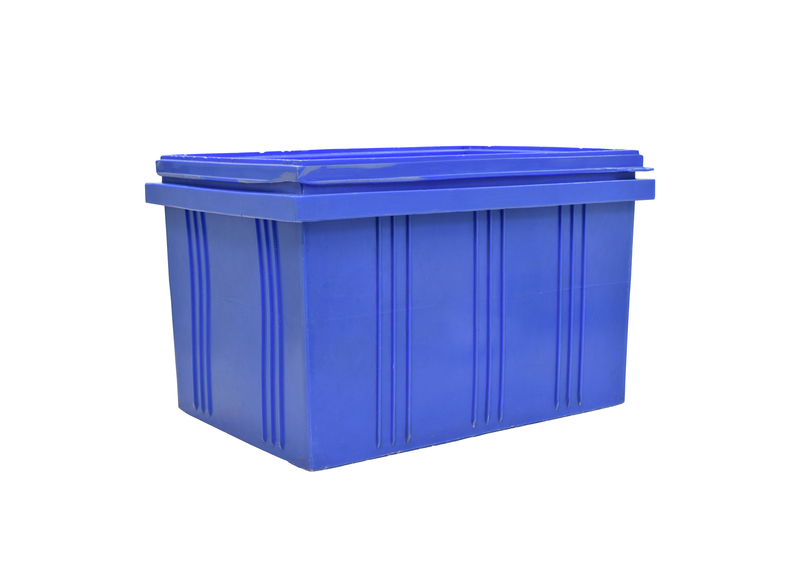Smart Steps for Freezer Storage During Downtime
Posted on 07/06/2025
Smart Steps for Freezer Storage During Downtime
In today's fast-paced world, the efficient management of freezer storage during downtime is a crucial skill for households, restaurants, and businesses alike. Whether you're preparing for a planned maintenance, seasonal shutdown, or unexpected power outage, knowing the smart steps to safeguard your frozen goods can prevent wastage, save money, and save time in the long run.
Understanding the Importance of Freezer Management During Downtime
Optimal freezer storage during inactivity ensures that your frozen food remains safe, fresh, and usable. Extended or sudden downtime can pose significant risks such as freezer burn, spoilage, or bacterial contamination. Learning smart techniques for managing this downtime will minimize losses and help maintain food quality.

Preparation: The Key to Smart Freezer Storage During Downtime
Preparation is the cornerstone of successful freezer downtime management. Here are essential preliminary steps:
- Check the freezer's condition: Ensure that your freezer is running at the correct temperature (0?F or below) before downtime begins.
- Inventory your contents: Take stock of what's inside. Organize and label everything. Knowing what you have will guide your decisions should downtime be extended.
- Plan meals: Use up items that are more perishable or nearing expiration first.
- Group similar items: Place meats together, vegetables together, and so on. This makes it easier to check on specific foods and to refreeze items, if necessary.
- Reduce air spaces: The more full your freezer is, the longer it maintains a frozen temperature during downtime.
What to Do Before Expected Freezer Inactivity
If you have advance notice of downtime, such as for cleaning or repairs, follow these smart steps for freezer storage downtime preparation:
- Adjust the temperature: Lower the temperature a day in advance to ensure food is extra cold.
- Freeze blocks of ice: Place containers of water in empty spaces to create ice blocks that will keep food cold longer.
- Group frozen food: Cluster your items together (especially in chest freezers) to help them stay frozen longer.
- Seal and wrap thoroughly: Use airtight containers, vacuum-seal bags, or double-wrapped packaging to prevent freezer burn and reduce air exposure.
Safe Food Handling and Storage Tips During Freezer Downtime
Keep the Freezer Door Closed
It can't be overstated: keep the freezer door closed as much as possible! Every time you open the door, warm air enters, reducing the freezer's internal temperature and increasing the risk of thawing.
- Chest Freezers vs Upright Freezers: Chest freezers hold cold air better due to their design. If you use upright models, extra caution is needed.
- Temperature Maintenance: A full freezer can keep food frozen for about 48 hours (24 hours if half full).
Monitor the Freezer Temperature
Use an appliance thermometer for real-time data on your freezer's status. If the temperature rises above 40?F for more than two hours, you'll need to check and possibly discard some foods.
Know Which Foods Can Be Safely Refrozen
Not all thawed foods are lost causes. According to the USDA, foods that still contain ice crystals or are below 40?F can be safely refrozen. Here are some general rules:
- Meat and Poultry: Refreeze safely if they feel "refrigerator cold." If they have thawed completely but remained below 40?F, cook immediately.
- Vegetables and Fruits: Most can be refrozen, though the texture may suffer.
- Dairy: Do not refreeze ice cream. Other dairy may be refrozen if cold but with altered texture.
Emergency Freezer Storage Solutions During Unexpected Downtime
Using Dry Ice and Alternatives
During longer power outages or delays, dry ice is your friend. Place dry ice on the top shelf of the freezer. Fifty pounds of dry ice can hold an 18 cubic foot freezer cold for two days. Always handle with gloves and follow all safety guidelines.
- Alternative Cold Sources: Gel packs, frozen water bottles, and even ice-filled coolers can extend thaw times for critical foods.
- Use Coolers for Overflow: If your freezer won't maintain the cold, use coolers filled with ice or cold packs for temporary storage of the most perishable items.
Organizing and Optimizing Freezer Space During Inactivity
Declutter and Deep Clean
Downtime is an opportunity to declutter your freezer. Remove expired, freezer-burned, or mystery items. Give the interior a thorough cleaning with warm, soapy water, followed by a solution of water and baking soda.
Label Everything
Proper labeling is key during freezer storage management downtime. Use waterproof markers and stickers to clearly note what everything is and when it was frozen. This step is essential to minimize food confusion after downtime ends.
Maximize Freezer Efficiency
Efficient organization ensures that cold air circulates freely and items are easy to locate. Store flat, vacuum-packed items to stack and fit more into small spaces. Group categories and keep taller items in the back for quick access after downtime.
Best Practices for Freezer Restart After Downtime
Gradual Restocking
Avoid overloading your freezer all at once after a downtime period. Allow your freezer to reach the correct temperature (0?F or lower) before returning items. Gradually reload frozen food to facilitate even air circulation and faster freezing.
Check the Quality of Each Item
- Look for Ice Crystals: Refreeze only items that are partially frozen or have ice crystals.
- Smell and Visual Test: Discard any foods with an off odor, color changes, or signs of freezer burn.
- Texture Evaluation: Some foods, such as creams and sauces, may separate after refreezing. Use your best judgment for each item.
Update Your Inventory
Now is the perfect time to update your inventory list and organize for future freezer downtime scenarios. Efficient inventory management reduces waste and ensures that older items are used before new ones.
Preventive Maintenance: Protecting Your Freezer from Future Downtime
Regular Equipment Checks
- Inspect Door Seals: A tight seal prevents cold air leakage and unnecessary frost buildup.
- Clean Coils and Vents: Periodically cleaning these keeps your freezer working efficiently.
- Schedule Professional Servicing: Have a technician inspect and service your appliance at least once a year.
Install a Freezer Alarm System
Wi-Fi freezer alarms or temperature monitors can alert you instantly if the internal temperature rises unexpectedly. These devices are invaluable for preventing significant food losses, especially during long-term storage.
Prepare an Emergency Power Plan
If you live in an area prone to blackouts or severe weather, it's wise to install a generator or UPS (uninterruptible power supply) to keep your freezer running during brief outages.
- Portable Generators: Ensure the power rating matches your freezer's requirements.
- Extension Cords: Use heavy-duty cords rated for appliance use only.

Frequently Asked Questions About Freezer Storage During Downtime
How can I tell if frozen food is safe after downtime?
Use a thermometer to check if the food stayed at or below 40?F. If foods have ice crystals or are refrigerator cold, they're usually safe to refreeze. Avoid refreezing ice cream, soft dairy, or any food with a sour odor or color change.
How do I minimize freezer burn during prolonged downtime?
Wrap foods tightly using multiple layers, vacuum-seal if possible, and group items together in the coldest section of the freezer.
What should I do with an empty freezer during downtime?
Fill empty spaces with water jugs to create thermal mass, which retains cold temperatures longer during inactivity.
Conclusion: Overcoming Freezer Downtime with Smart Storage Steps
Taking the right steps for freezer storage during downtime can make the difference between saving your frozen inventory and losing valuable food. From preparing and organizing in advance to using emergency cold sources and restarting efficiently when downtime ends, these actionable strategies ensure your freezer goods survive even the longest interruptions.
By regularly maintaining your freezer, planning for emergencies, and maintaining an accurate inventory, you'll turn a potential crisis into a manageable situation. Implement these smart freezer storage steps for peace of mind and lasting food quality during any period of inactivity.
```


